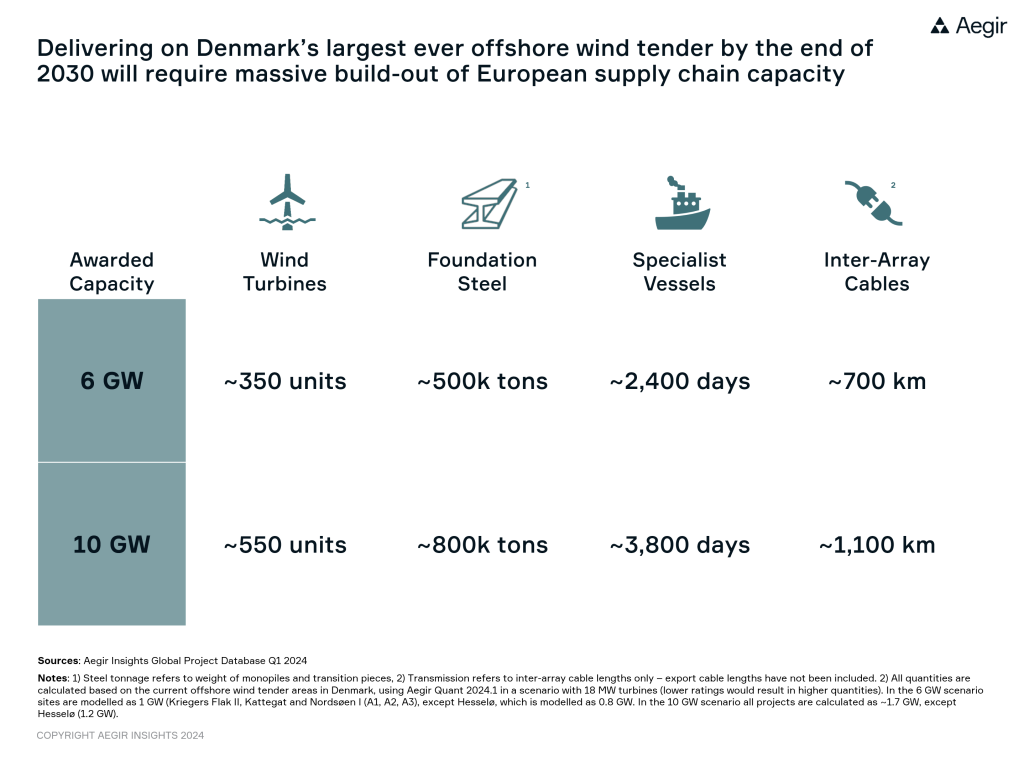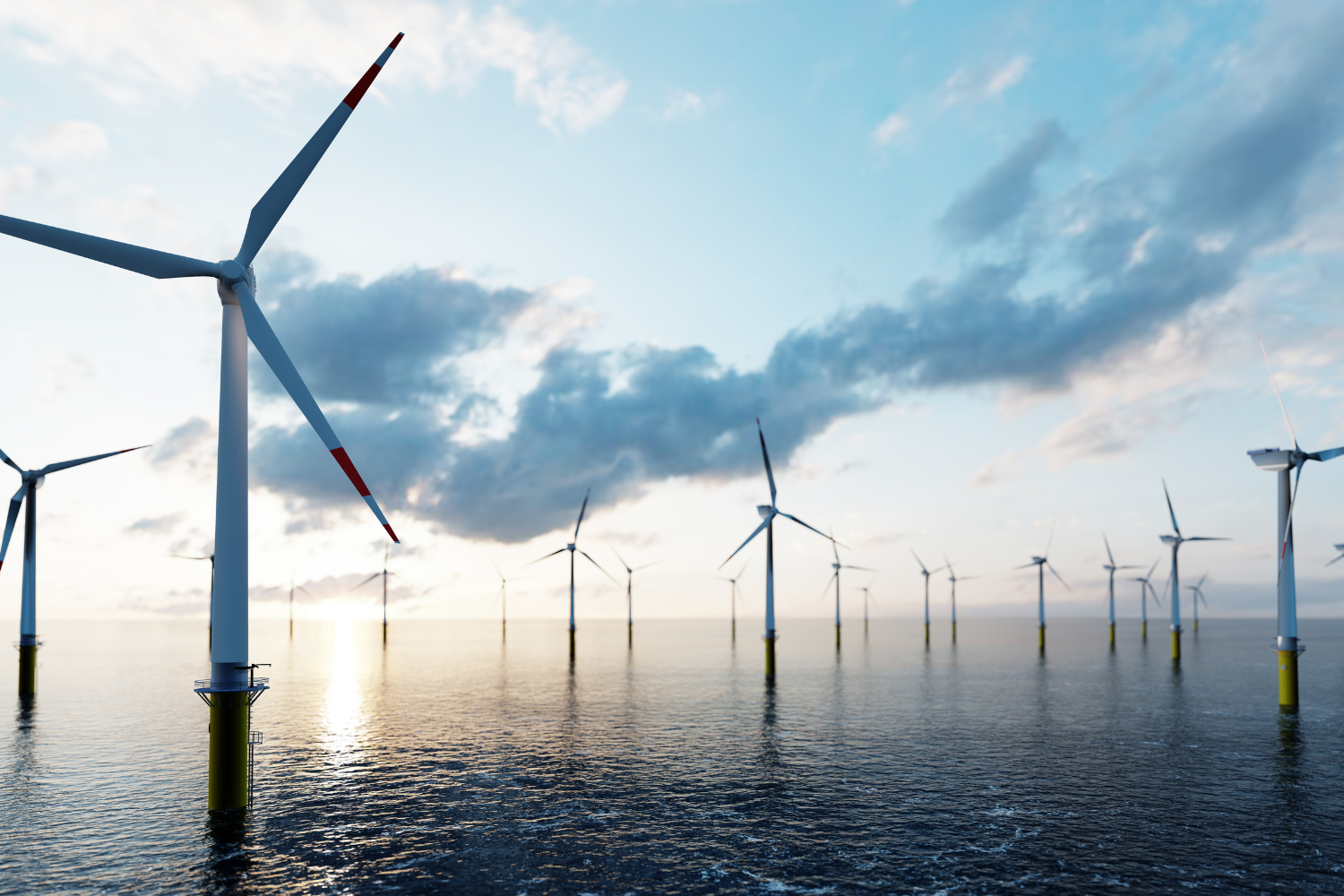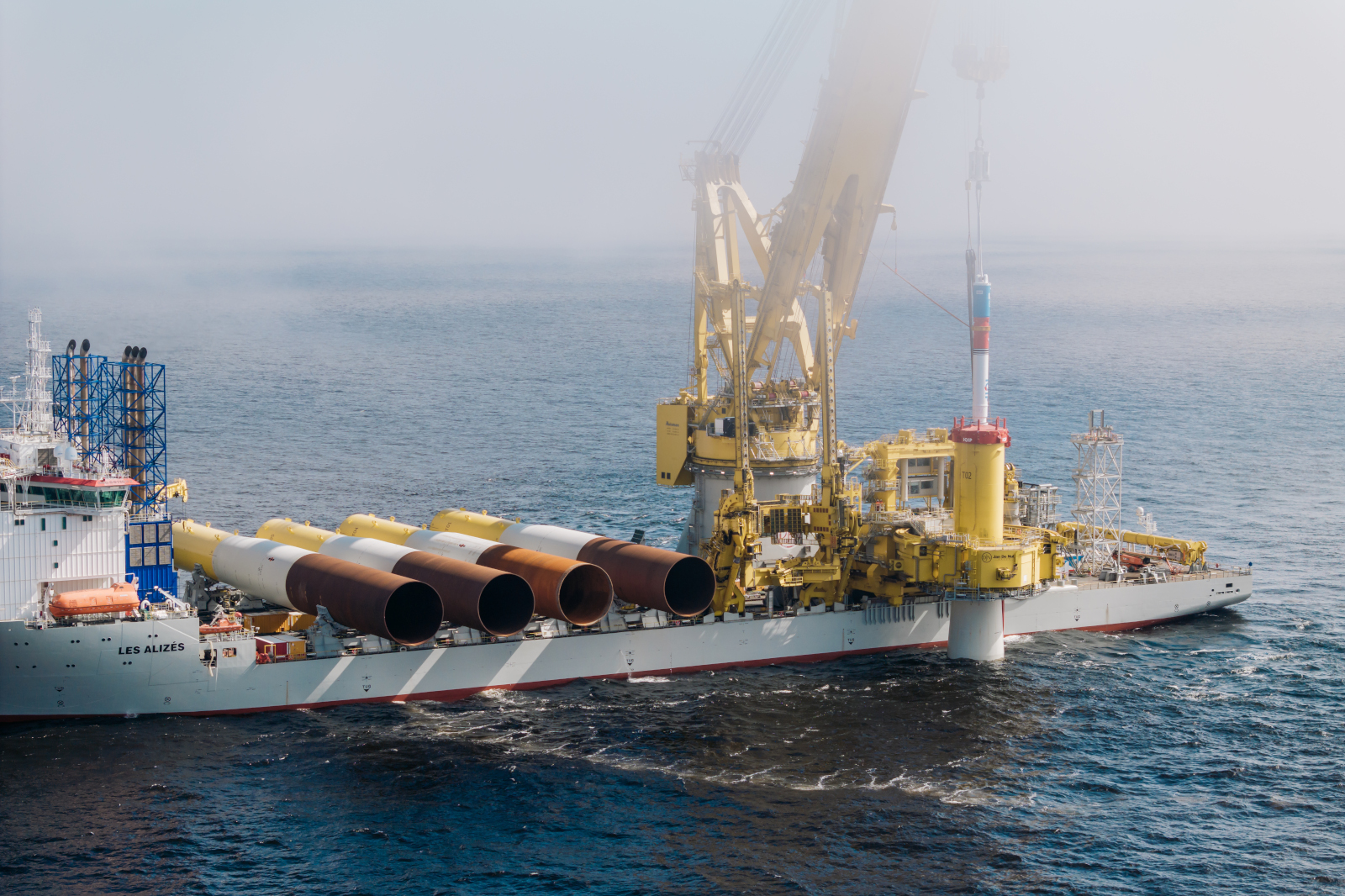In a bold move towards renewable energy dominance, Denmark has unveiled its most ambitious offshore wind tender to date. Last week, the Danish Energy Agency initiated a tender aimed at ushering in an impressive 6-10 GW of new capacity by the end of 2030. This monumental undertaking marks a significant milestone in Denmark’s journey towards becoming a green powerhouse in Europe.
The scale of this endeavor is unprecedented, especially considering the neighboring countries, such as the UK, Germany, and the Netherlands, are also aggressively pursuing similar offshore wind ambitions for the year 2030. The competition for procurement contracts is fierce, and it may ultimately determine which projects successfully meet their target Commissioning On Dates (CODs).
The logistics involved in executing such a massive project are staggering. A detailed analysis conducted by AEGIR INSIGHTS sheds light on the immense infrastructure and supply chain demands. For instance, under the minimum planned capacity scenario of 6 GW, approximately 350 new wind turbines, accompanied by over 1,000 blades, will need to be installed across the designated sites. This installation effort necessitates 350 foundations, amounting to a staggering 500,000 tons of steel submerged into the sea. Moreover, the transmission infrastructure requirements include laying down 700 km of inter-array cabling and up to 1,000 km of export cables. The construction phase alone is projected to span almost 2,400 days, utilizing specialized installation vessels.

Source: Aegir
However, the analysis also underscores the potential for overplanting, which could see the total capacity reach 10 GW. This would further intensify the competition for procurement contracts, placing additional strain on the northern European offshore wind supply chain.
The tender frameworks set by the Danish Energy Agency outline the parameters for this monumental endeavor. Spread across six offshore wind farms, including Nordsøen I, Hesselø, Kattegat, and Kriegers Flak II, the tender represents the largest in Danish history. Each gigawatt of offshore wind capacity generated has the potential to power approximately 1 million Danish or European households, highlighting the significant impact of this initiative on energy sustainability.
Furthermore, the tender introduces the concept of overplanting, allowing developers the freedom to exceed the minimum 6 GW capacity requirement. This flexibility could lead to the establishment of up to 10 GW or more of offshore wind capacity, further solidifying Denmark’s position as a leader in renewable energy innovation.
The Danish government’s commitment to sustainability is evident in the tender conditions, which include stringent requirements to ensure increased sustainability and social responsibility in the projects. Importantly, the 6 GW will be tendered without state subsidies, with bidders instead offering a yearly concession payment to the Danish state over a 30-year period for the right to utilize the seabed. Additionally, the Danish state will retain a minority ownership of 20% in each tendered offshore wind farm, ensuring continued involvement in the nation’s renewable energy transition.
Source Aegirinsights.com & BalticWind.EU














